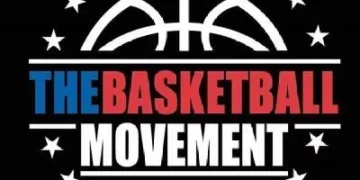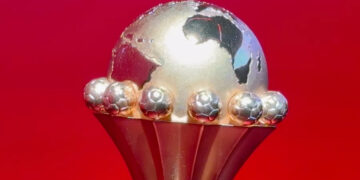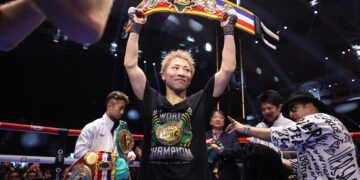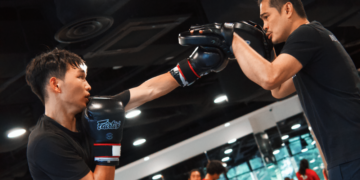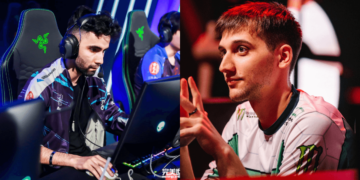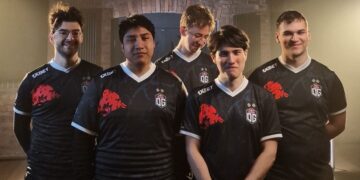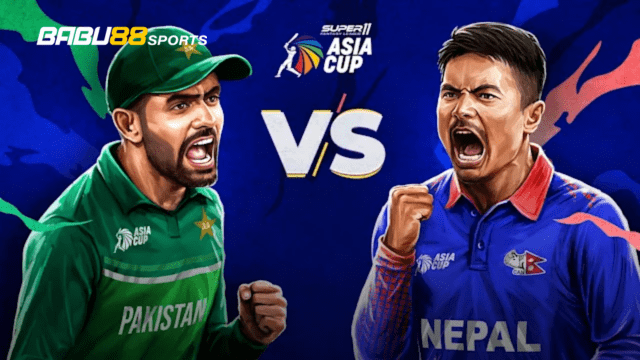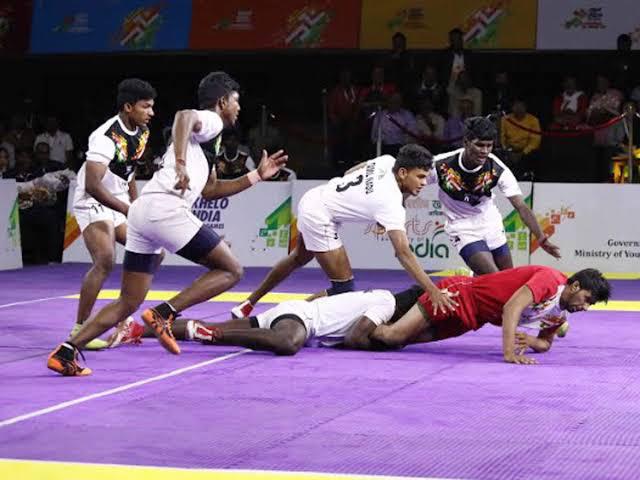In recent years, martial arts have become more popular. More people are joining martial arts gyms to try these exciting sports. They do this for reasons like health, stress relief, and weight loss. Boxing has a standard way of competing.
In contrast, Thai culture influences Muay Thai. It mixes tradition and technique which makes is what makes it unique.
If you are new to Muay Thai or planning to join a Muay Thai gym in Singapore, you might be curious about how ranking works and why stadiums play such a big role in the sport. This guide will help you understand both.
Do Belts Exist In Muay Thai?
Muay Thai does not have a traditional belt ranking system like Brazilian Jiu-Jitsu. Some Muay Thai gyms use colored armbands. This is especially common in the West and in places like Singapore.
These armbands, called “prajiad,” show a student’s progress. Students tie these bands around the bicep, and they often follow a color system inspired by other martial arts.
The purpose is to help students track their development in technique, fitness, and understanding of the sport. It also gives beginners goals to work toward, which can be motivating in a structured class setting.
The Prajiad System Explained
The prajiad is a colored armband traditionally worn for good luck. In modern training systems, it has evolved into a symbol of rank. While the exact colors and criteria may vary between gyms, the general order typically includes:
- White: For beginners learning the basics.
- Yellow To Green: For students developing consistency in technique.
- Blue To Purple: For intermediate levels showing solid control and timing.
- Brown And Red: For advanced students with high skill levels and sparring experience.
- Black Or Gold: Reserved for instructors or professional-level fighters.
It is important to note that this system is not universally followed. Some gyms use different colors or skip colors altogether. Others use written assessments, sparring evaluations, or pad work performance as markers for progression.
No matter where you train in Muay Thai, the prajiad system emphasizes structure and personal growth. It helps students stay engaged while respecting the traditional spirit of the sport.
What About Belt Titles In Competitive Muay Thai?
In competitive Muay Thai, especially in Thailand, there are no belts awarded in the traditional martial arts sense. Instead, fighters earn titles by competing in prestigious stadiums and winning matches against high-level opponents.
Every competitive fighter receives a ranking based on their competing weight class and performance in the ring. Much like boxing, championship belts exist at various stadiums and under different sanctioning bodies.
Fighters can earn a spot as the top contender by winning enough matches and points. If they already have the title, they will defend it. This makes them the current titleholders in the stadium division for the season.
Winning a stadium title in Thailand is one of the highest honors in Muay Thai. These titles carry deep cultural value and often mark the fighter as one of the best in the country, if not the world.
The Role Of Thai Stadiums In Muay Thai Culture
Thailand is home to some of the most respected stadiums in the world of Muay Thai. These stadiums are more than venues. They are the proving grounds for fighters who dream of reaching the top. The most iconic ones include:
1) Lumpinee Stadium
Located in Bangkok, Lumpinee is one of the most famous Muay Thai stadiums in the world. Many people consider winning a title here a career-defining achievement.
People often view fighters who hold the Lumpinee title as elites in the sport. The stadium regularly features bouts with elite fighters. Additionally, ONE Lumpinee is held there, drawing numerous international talents to participate.
2) Rajadamnern Stadium
Located in Bangkok, the Rajadamnern stadium is recognized as the oldest Muay Thai arena in Thailand. Rajadamnern titles are also highly respected, just like the Lumpinee titles.
While many often debate which is better than the other, both stadiums symbolize the peak of competitive Muay Thai. With fighters like Saenchai and Buakaw competing in RWS, the stadium still shapes the sport’s lasting legacy today.
3) Channel 7 Stadium
This stadium is famous for broadcasting Muay Thai fights all across Thailand. It has helped introduce the sport to a broader audience. Although it might not hold the same fame as Lumpinee or Rajadamnern, it remains a prestigious title throughout Thailand.
4) Omnoi Stadium
Often seen as a platform for rising stars, Omnoi hosts regular bouts that showcase up-and-coming talent. It plays a key role in shaping the next generation of Muay Thai fighters. Many foreign Muay Thai fighters also begin competitive fighting at the Omnoi stadium.
How This Applies To You
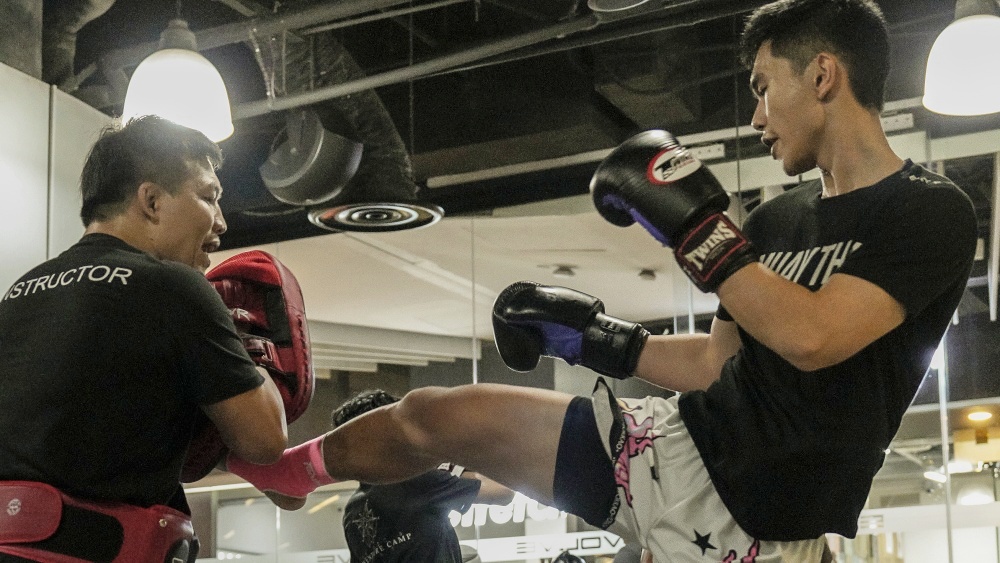
For many outside Thailand, Muay Thai is less about titles and more about personal growth, fitness, and honoring a rich cultural tradition through consistent, purposeful training.
For most students training outside of Thailand, including those in Singapore, stadium titles may not be the end goal. Instead, the focus is often on personal development, fitness, discipline, and cultural appreciation. Whether your gym uses a prajiad ranking system or not, the key is to show up consistently, respect the art, and train with purpose.
Even if you do not plan to compete, knowing the structure and values of Muay Thai is important. This includes how fighters are ranked and what stadiums mean.
Understanding these aspects helps you connect more with the sport. It reminds you that you are part of something bigger than just a workout. You are engaging with a tradition that has shaped lives and communities for generations.
Final Thoughts
Muay Thai’s structure may be different from other martial arts, but that is what makes it unique. You may not earn colored belts in other martial arts, but your progress and growth can be visibly seen through hard work, commitment, and focus; you’ll find yourself.
Whether you train for fitness, skill, or competition, Muay Thai offers a clear path forward. And if you ever find yourself watching a fight from Lumpinee or Rajadamnern, you’ll know just how much heart and history are behind every strike thrown.
You may also like:
Why Controlled Aggression Is A Game-Changer In Martial Arts
Let’s be honest. Everyone thinks aggression gets a bad rep. In day-to-day life, we’re told to stay calm, composed, and controlled. And that’s good advice for your job, at home with your family, maybe even…
In martial arts, you’ll often come across a wide range of terms used during training. But when you hear the word sparring, what comes to mind? It means stepping into the training space with another…
If you are thinking about picking up a striking martial art in Singapore, you’ve probably heard of two popular options, Muay Thai and Boxing. Whether your goal is fitness, fun, or personal growth, understanding the…
Whether you are training at a local martial arts gym in Singapore training Boxing, Muay Thai, MMA or anywhere else, you will always hear one word repeated, footwork. Why is that? Well, you can have…
Not many Muay Thai fighters compete at the highest level well into their late 30s. Even fewer manage to stay on the edge. Nong-O Hama is one of the rare exceptions. Since making his debut…
The bell rang, and you could tell something was off. Not in a bad way — just different. Instead of the usual slow-paced chess match that defined traditional Muay Thai, the fighter in red trunks…
In Singapore’s growing fitness scene, more people are venturing beyond high-impact routines and exploring sustainable ways to stay fit. Whether you are an avid athlete or someone who is just starting out on your fitness…
You know that feeling, the one where you stare down the weighing scale, hoping the number’s budged, only to see the same stubborn digits again. You’ve cut carbs, done late-night treadmill guilt sessions, and even…
If you’re new to Brazilian Jiu-Jitsu and starting your training journey in Singapore, you may have heard of the two main styles of practice, Gi and No-Gi. Both are part of the same martial art,…
As we grow older, long hours at the desk and daily responsibilities can quietly take a toll on our bodies. A lack of movement often leads to stiff joints, persistent aches, and health issues linked…
Boxing has always been a global sport, attracting fans from all around the world, including the United States, the United Kingdom, Spain, and across Asia in countries like the Philippines and Singapore. From local gyms…
Over the past year, fitness communities around the world including in Singapore have seen a growing interest in something called ‘zone’ training. More people are moving away from traditional high-impact routines and turning to sustainable,…




